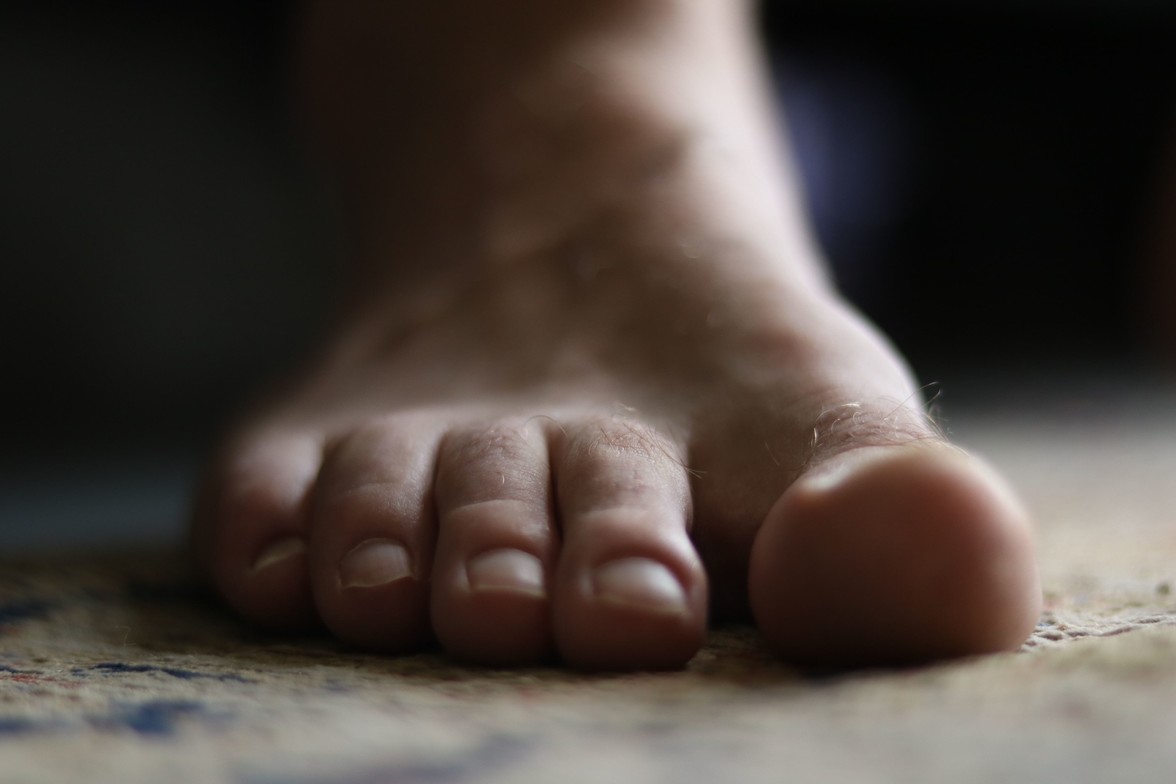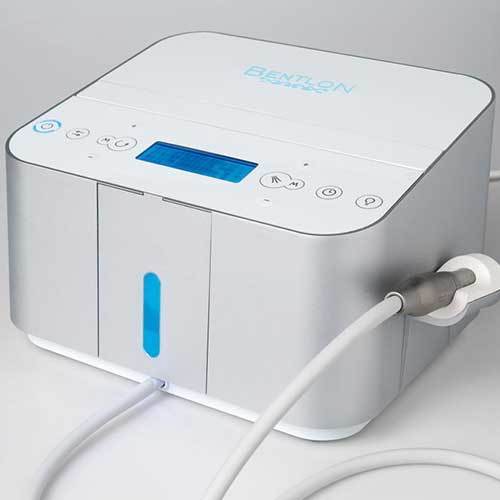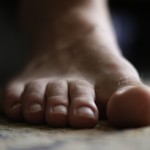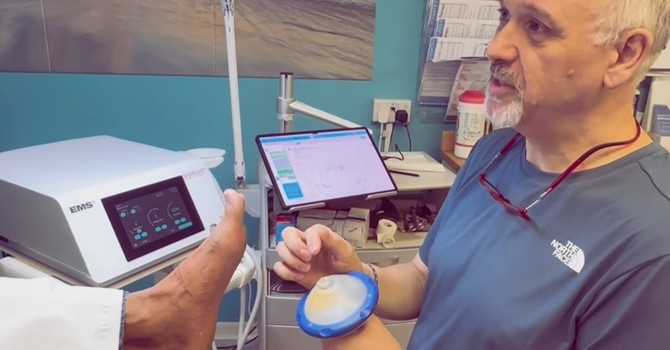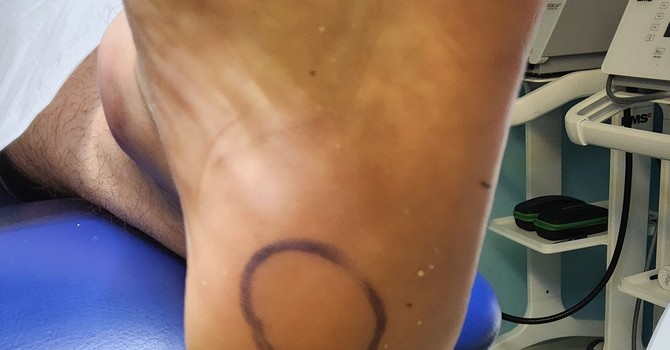Tinea Pedis & Onychomycosis
Fungal nail infection, known in podiatric medicine as onychomycosis is very common. The infection may affect up to 14% of the general population.
Most fungal nail infections are not serious. However, some people may experience pain or be bothered by the appearance of their nails.
Fungal nail infections may cause nails to become discolored, thick, fragile, or cracked. The nail may also become separated from the nail bed. The least serious type of infection only affects the surface of the nail plate, whilst more serious infections grow underneath the nail plate and infect the nail bed itself.
Usually the infection starts by gaining a hold under the leading edge of the nail where the nail attaches to the nail bed. This is called the hyponychium.
People who have fungal toenail infections often have a fungal skin infection on the foot, especially between the toes (commonly called athlete’s foot, ringworm on the foot, or tinea pedis).
There are several factors influencing skin and nail infection which need to be considered:
- General health of the body including other factors like peripheral arterial disease, and diabetes
- Foot hygiene
- Type of footwear & hosiery (all enclosed shoes act like incubators of infection)
It is particularly important to only be examined and treated by a health professional who has specialised training & experience in treating a broad range of skin & nail problems.
Our experienced & knowledgable podiatrists will also assess other health factors that can influence skin & nail infections like diabetes & peripheral arterial disease. As well as advise on footwear which always plays a part in the health of our feet.
The type of fungus infecting nails are called dermatophytes. Some dermatophyes are more aggressive at spreading than others. And can be more resistant to treatment. We can send samples of the infected nail away for expert culture & sensitivity analysis to identify what specific species of fungal nail infection you have.
What we do depends on the type of infection, the area of the nail involved & size of the infection.
Nail surface infections are very easy to treat with high success rates. Deeper nail bed infections are more difficult to eradicate.
There are no treatments available that have 100% success rates. Even the most effective method using GP prescribed oral antifungal medication has 85% success rate. But there is a small potential for serious side effects on the liver for vulnerable people, and are contraindicated for some patients, including pregnant women. Most GPs are rightly cautious about prescribing oral antifungals.
At Cornwall Podiatry we use several methods to treat fungal nail infections, including:
- reducing the nail down to the nail bed with a PodoSpray nail drill. (This is painless because it uses a fine antiseptic spray to cool the area). Then we recommend using an antifungal nail spray or paint daily for several months, with monthly nail reduction.
- or we remove the nail plate as a whole under local anaesthetic, treat the nail bed & root with 89% phenol for 10 seconds. Once the nail bed heals in 7-10 days we recommend patients use an antifungal nail paint until the nail regrows.
Even if it is not possible to completely eradicate a fungal nail infection in some cases, you will have noticeably better looking and healthier feet following treatment with us.
We don't use lasers to treat fungal nail infection because the scientific evidence is very sparse and poor in quality, with no double-blind randomised control studies. Meaning we prefer to use tried & tested methods to treat onychomycosis.
We have great success in treating all the different types of foot infections. So you don't have to put up with unhealthy feet.
If you need to a consultation with our podiatrists please phone our reception staff on 01326 565 565


